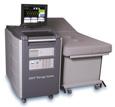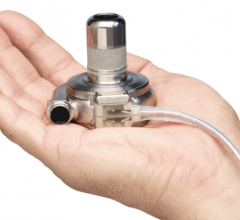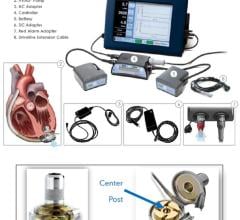
April 2, 2009 - Vasomedical Inc. this week conducted two presentations on the beneficial effects of EECP external counterpulsation therapy at the 58th Annual Scientific Session of the American College of Cardiology (ACC) in Orlando.
The external EECP counterpulsation therapy is a noninvasive, outpatient therapy used in the treatment of ischemic cardiovascular diseases, currently used to manage chronic stable angina and heart failure. The therapy increases blood flow and oxygen supply to the heart muscle and other organs and decreases the heart's workload and need for oxygen. Function of the endothelium, the inner lining of blood vessels throughout the body, is also improved, lessening resistance to blood flow. These actions reduce or eliminate symptoms of angina and heart failure, the company said.
The first presentation by Randy W. Braith, M.D., Richard C. Conti, M.D., and colleagues from the University of Florida in Gainesville demonstrated that EECP therapy significantly improves brachial flow-mediated dilation, reduces arterial stiffness, increases nitric oxide release, exercise duration and peak oxygen consumption while there are no significant changes in the control group with low pressure sham EECP treatment. The consistency of all parameters examined in this study involving non-invasive measurements of endothelial functions by a world-class team of scientists, researchers, and clinicians confirms that EECP therapy improves peripheral endothelial function and reduces arterial stiffness. These vascular adaptations decrease left ventricular afterload and myocardial oxygen demand, and increase anginal threshold in patients with refractory angina.
The second presentation by Steffen Gloekler, M.D., and colleagues from University Hospital in Bern, Switzerland showed EECP therapy promotes coronary collateral growth (arteriogenesis) in a single-blinded, sham-controlled study of 15 coronary artery disease (CAD) patients, treated for 30 hours at two-hours per daily session. Nine patients received EECP treatment with 300 mmHg of cuff inflation pressure (EECP group), six with 80 mmHg inflation pressure (sham group). Invasive coronary collateral assessment was performed at baseline and after EECP therapy using the Collateral Flow Index (CFI); a ratio of mean occlusive pressure determined invasively using a pressure guidewire distal to the balloon-occluded coronary artery and the mean aortic pressure. In the EECP group, CFI changed from 0.122 ± 0.06 to 0.210 ± 0.07, p=0.0002, and in the sham group from 0.165 ± 0.08 to 0.130 ± 0.06, p=0.04. The active EECP treatment induced a difference of CFI of 0.088 ± 0.07 versus –0.044 ± 0.07 in the sham group (p=0.00005). The study concluded that the clinical benefit of EECP for CAD patients might be explained by its arteriogenetic effect due to the increased laminar shear stress at the endothelial cell layer, improving endothelial function.
"The clinical effectiveness of EECP in the treatment of ischemic heart disease has been well established, but the multiple mechanisms of action (MOA) remain to be explored. The mounting evidence that EECP increases blood flow velocity and therefore the shear stress on the endothelium leading to improvement in endothelial function can now be recognized as one of the leading MOA. The two randomized-controlled studies presented during this ACC meeting provide definitive evidence to support the hypothesis that EECP improves endothelial function and enhances arteriogenesis by promoting collateral growth," Dr. Conti said.
For more information: www.acc.org, www.vasomedical.com


 June 19, 2024
June 19, 2024 









